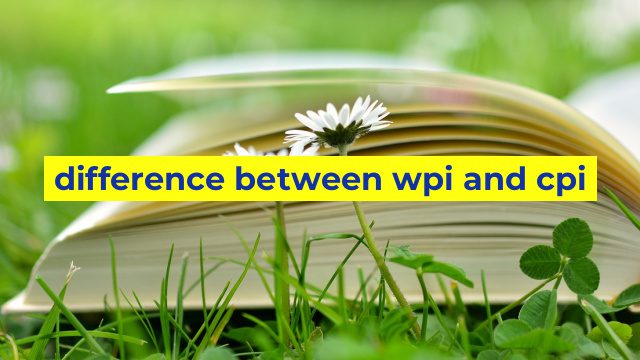What is WPI and CPI? Understanding the Difference
Introduction
When discussing economics, two terms that often get thrown around are WPI and CPI. These acronyms may seem confusing at first, but they both play an essential role in tracking inflation and prices in the economy. In this article, we will delve into the difference between WPI and CPI and how they are calculated.
WPI: The Wholesale Price Index
WPI stands for Wholesale Price Index, and it tracks the average changes in prices at the wholesale level. It measures the changes in prices of goods that are bought and sold in large quantities, such as raw materials and finished products. WPI is calculated monthly by the government, which surveys wholesale businesses to track the changes in prices of various goods.
WPI plays an essential role in tracking inflation and the overall state of the economy. It is used by policymakers to adjust monetary policy, such as raising or lowering interest rates, to control inflation.
CPI: The Consumer Price Index
CPI stands for Consumer Price Index, and it measures the average changes in prices of goods and services at the consumer level. It tracks the cost of living for individuals and households by monitoring the prices of various goods and services, such as housing, food, transportation, and medical care. CPI is calculated monthly by the government and is used to adjust wages, social security benefits, and taxes.
CPI is a critical component of the economy as it tracks the cost of living for the average person. It helps policymakers adjust policies to ensure that individuals and households can afford basic necessities and maintain their standard of living.
Their Differences
Although WPI and CPI may seem similar, they have some fundamental differences. WPI tracks the prices of goods at the wholesale level, while CPI tracks prices at the consumer level. WPI covers goods bought and sold in large quantities, while CPI covers goods and services bought by the average consumer. WPI reflects changes in prices before they are passed on to consumers, while CPI reflects the prices paid by consumers for goods and services.
Conclusion
Understanding the difference between WPI and CPI is essential for anyone interested in the economy. Although they both track price changes, they do so at different levels and have distinct purposes. WPI tracks the changes in prices at the wholesale level, while CPI tracks the changes in prices at the consumer level. Both WPI and CPI serve as critical tools for policymakers in monitoring inflation and adjusting economic policies.
Table difference between wpi and cpi
| Category | WPI (Wholesale Price Index) | CPI (Consumer Price Index) |
|---|---|---|
| Definition | Measures the price of goods at the wholesale level | Measures the price of goods at the retail level |
| Scope | Includes prices of goods bought and sold in bulk by manufacturers and retailers | Includes prices of goods bought by households for personal consumption |
| Weighting | Weighted on the basis of production and sales value | Weighted on the basis of household consumption pattern |
| Frequency of update | Updated weekly by the government | Updated monthly by the government |
| Effect on economy | Affects the cost of input materials for manufacturers and retailers | Affects the cost of living for households |
